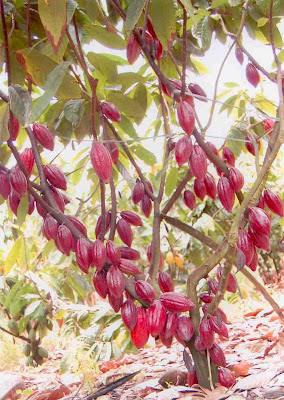 |
| Believe it or not, there are over 1,500 trees in this nursery! |
I became inspired to write a new post because I realized that planting 1,500 trees is actually a pretty remarkable thing. We have 5 to 6,000 trees already so I didn't think much about it at first but when I saw the nursery when all the trees were ready, I became a bit overwhelmed.
Because preparing the trees is difficult enough but planting and then caring for them is a whole order of magnitude more difficult.
We have to cut the grass so the small trees don't become overwhelmed, we have to fertilize them so they can survive the hot and dry summers and we have to prune them so they get a good shape for harvesting. Not to mention we are grafting between 1/2 and 1/4 of the trees so that they are more productive and disease resistant.
 |
| Secret in front of the vivero before the seeds sprout. |
I just completed another fun project. I don't smoke cigarettes but knowing that I could grow tobacco in this climate, I decided to do just that. I got some seeds from a local curandero and a couple of nice looking plants came up with very little work. After harvesting, I strung them up in my house and let them cure for a few months. I had no idea what I was doing, I had just heard that you had to cure tobacco before smoking it.
So I cured it, dried it, rolled a cigarette and smoked it. And it tasted pretty good! I had no idea what a cigarette tastes like so I gave it to a local guy. He smoked it and confirmed to me that it tasted like a cigarette - so I'm pretty happy about that.
Doesn't look like much but now I've got more tobacco than I can smoke.
 | ||||||||||||||
| Tobacco Finally, a bird's nest I found in a fence post, actually a living tree which is planted as a big cutting. The latin name is glyricidia, also known as madre de cacao. |
























